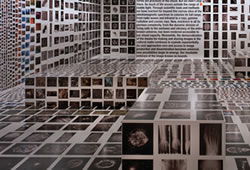printers and scanners
In the comments to yesterday’s post about my experiments, virtual friend and artist-blogger in Alaska, Elise Tomlinson asked some very interesting questions, which have inspired me to write today’s entry.
So, do you have your own printer and scanner for doing giclees? I am so intrigued with the whole process of them. Right now I get them done by a local print shop, they are reproductions of paintings I’ve done…but I’ve heard of other artists with their own printers/scanners who use the new technology to produce what I would consider to be original fine art prints (using your definition) conceived of originally as a print, where they control the amount of ink, the paper, etc. What are your thoughts on that? Also, if you do have your own equipment, would you mind sharing what brands you own?
I first wrote nearly two years ago about the tools that I use and later about the studio where I make my prints – you might start reading these first for a background.
At home I still use my old (1997) Umax Astra 1200S scanner though it’s SCSI and has to be connnected to an old Mac G3 which I can access at my Mac G5 via the network. It’s slow and a bit inconvenient but I haven’t wanted to spend the money on a new one with a fast Firewire connection because I do like its 8.5 by 14 inch bed.
When I need to do some high resolution scans for my large printworks, I use the studio’s scanner, an Epson Professional (I’ll check the precise model tomorrow), which allows slide and film scanning too. (It’s 1680.)
I still use my HP Deskjet 1220C 13″ printer at home, one I chose because the studio has one, as does the technician herself in her home studio, and it’s proven to be a real workhorse. It uses water-based dye ink, which is not fully archival ie. more than 80 years, though still very good. I use it for small projects and proofing my work in a smaller scale before printing at the studio’s 42″ HP 5000UV which is fully archival with waterproof UV pigment inks. The experiments that I wrote about yesterday were done with this studio printer.
It is a high end professional machine that has been very durable, reliable and gives excellent results. It’s just that some artists like yours truly are pushing the medium further and expecting it to do more than it was designed for!! Newer models offer more features of course. One of the Institute members recently bought himself an Epson 7800 (I think) that is 24″ wide, with adjustable heads to allow thicker materials and with a straight feed for rigid surfaces. So for my problem with the organza, his printer might work better!
And my thoughts on giclee printing? Please read prints vs reproductions.


